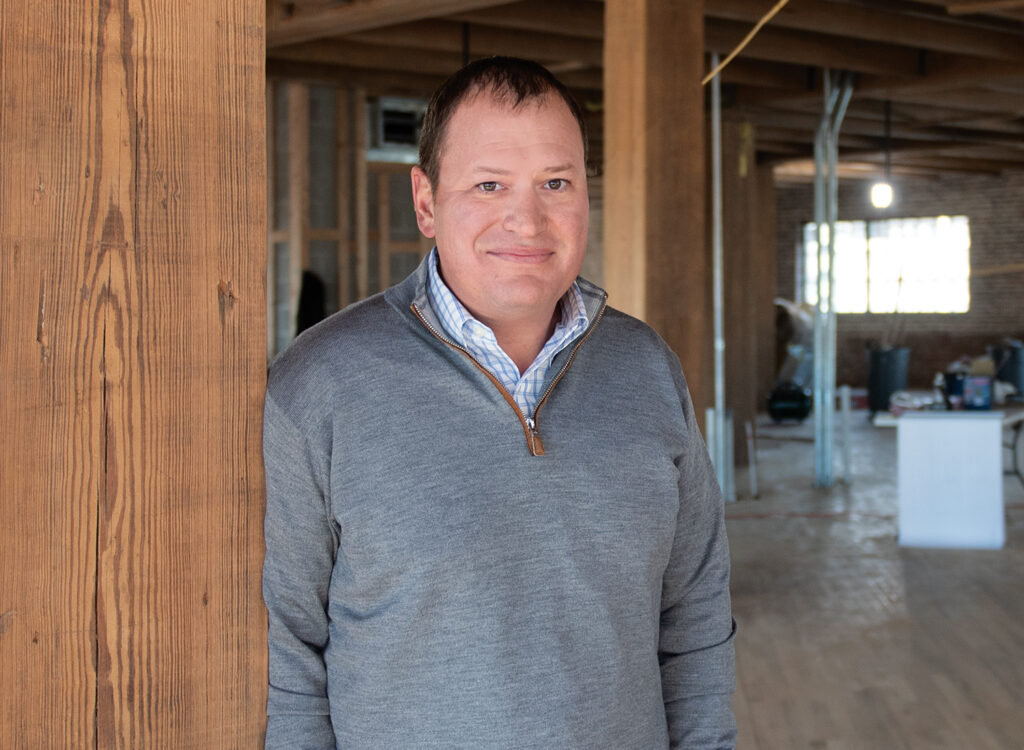15 Industry Trends for 2015

BUSINESS RECORD STAFF Jan 2, 2015 | 12:00 pm
19 min read time
4,497 wordsBusiness Record Insider, Economic Development, Energy, Government Policy and Law, Innovation and Entrepreneurship, Manufacturing, Real Estate and Development, Retail and Business, TransportationMy environment is about to get a whole lot better.
Sorry, Doug. As much as I want to give you credit, your prediction on real estate trends came a bit late for us. But I can personally validate the assertion by Doug Siedenburg, owner and president of The Siedenburg Group, that office improvements will be used to attract and keep workers in 2015.
By the time this issue is printed, the Business Record’s newsroom will be newly remodeled, complete with new paint, desks, ergonomically correct chairs, laptops and most important – a 55-inch flat-screen TV.
Yeah, I think newsroom productivity is about to get a big bump. Our reporters promise at least a 25 percent increase in story production in 2015.
OK, maybe not that much, but one thing is certain: Our company making the financial commitment to upgrade our workspace has had a positive impact on morale – and our spines.
I joke, but in an industry fraught with staffing cuts, it’s sure nice to work for a media company that’s making a profit and is, in turn, reinvesting in its products, its staff and their work environment.
Environment is a theme you’ll read a lot about in many of the responses from the 15 business leaders whom we asked to highlight key trends from their respective industries.
They write about water availability, speeding up the environmental approval process, mitigating flood risks, creating healthier work environments, making physical changes to our transportation network. Getting flat-screen TVs can improve office environments too, especially when the editor wants to watch March Madness in the office.
But I digress. It’s our hope that each of our guest writers’ foresight and expertise in their given industries will enable you to do business better in 2015.
Now, back to work. I need to add Doug’s piece into my ROI report justifing our newsroom remodel… right after the game of course.
– Chris Conetzkey, editor or the Business Record
Energy & Utilities
Mark Petri
Director, Iowa Energy Center
Energy producers will face fluctuating water needs due to climate change
Trend: Energy production will be increasingly constrained by water availability.
Impact: The interconnection between energy and water will intensify as the climate continues to change. Congress and federal agencies are looking to address this energy-water nexus, which could present challenges, but also opportunities, for Iowa businesses. Climate projections for Iowa suggest that, although overall precipitation will rise over the coming years, the state will be subject to more extremes of heavy rain (especially in the spring) and periods of drought (especially in the summer). This will affect energy production in two ways.
First, thermoelectric power production, such as from coal and nuclear plants, will have to accommodate uncertainties in cooling-water supply, possibly curtailing production during periods of extended drought. Compounding this concern, as average temperatures rise and the region sees more high-temperature extremes, the demand for electricity will grow. Indeed, the Midwest has seen an increasing frequency of major heat waves over the past 60 years.
Second, Iowa’s water-intensive bioenergy economy — the growing of energy crops and the chemical conversion of biomass to fuels — will have to adapt to extremes in water availability.
These challenges represent opportunities for business innovation, however. Dry-cooling, heat-recovery and advanced power cycle technologies for power plants are becoming more available. Alternative energy options that do not rely on water cooling, such as wind power and solar photovoltaics, are becoming more economical. And substantial research is underway to develop drought-tolerant energy crops and more water-efficient chemical conversion processes.
Law & Government
Dan Dutcher
Community and Economic Development Director, City of Waukee
Cities will speed their environmental approval process
Trend: With environmental issues increasing for developers, the trend of cities taking steps to speed the environmental approval process will be more common throughout the state.
Impact: Waukee is poised for significant business growth, with hundreds of acres of undeveloped land on the Kettlestone and Hickman Road business corridors. A consistent theme city officials hear from developers is that speed matters in development. A quick development process reduces developer risk, saves money and enables businesses to capitalize on current opportunities.
Environmental regulations are becoming more complicated and more time-consuming, creating risk for developers. Regulations concerning storm water management, wetlands mitigation, endangered species and other matters are becoming a larger factor in land development. The environmental approval process can slow the speed of development and make a project unprofitable.
Waukee is taking a proactive approach by performing more upfront site selection work for developers. In the Kettlestone development, we are moving through the environmental approval process before developers come on board, in an effort to encourage fast and easy development and to help developers succeed in Waukee.
Waukee’s continuing relationship with the U.S. Army Corps of Engineers and the Iowa Department of Natural Resources allows delineation and mitigation before a developer purchases the land.
HR & Education
Steven Leath
President, Iowa State University
Institutions will embrace diversity
Trend: It is becoming more important than ever to create learning and working environments that embrace diversity.
Impact: The fundamental aspect of Iowa State University’s land-grant mission is to provide the next generation of great thinkers, leaders and entrepreneurs with a comprehensive education. That includes educating them in an environment that reflects the U.S. and the world.
Right now, Iowa State is the most diverse it’s ever been. Our students represent all 99 of Iowa’s counties, all 50 states, and 110 countries, but we know we can do more to create a more inclusive environment for everyone regardless of race, gender, age, religion, sexual orientation or socio-economic background.
Why is this so important? Because a diverse population produces a wide array of perspectives, capabilities, experiences and ideas that can ultimately lead to the next great innovation, effect positive change or promote advancement. But in order for that to happen, we must do more than simply tolerate the differences of others; we must truly appreciate the value of those differences.
Iowa State is taking steps such as hiring a chief diversity officer to identify ways to improve our campus environment; joining the University Innovation Alliance, which aims to close the achievement gap; and launching a cultural exchange with North Carolina A&T State University, a historically black college. As our students move from the classroom to the workplace, they will bring with them not only the knowledge and skills to be productive employees, but also the ability to recognize how diverse points of view can make our companies, our communities and our country stronger.
Ag & Environment
Jan Glendening
Iowa State Director, The Nature Conservancy
Businesses will address water quality and flooding
Trend: Public-private partnerships at a watershed scale will be key to addressing Iowa’s water quality and flooding challenges.
Impact: 2014 brought record-high levels of nitrates flowing down many of Iowa’s rivers and streams. Meanwhile, residents across the state endured floods in 2008, 2010, 2011 and 2013 that caused billions of dollars of damage. It is clear that Iowa will need to identify and implement upstream solutions at the watershed scale to improve water quality and reduce flood risk.
Solutions include on-the-ground conservation practices, such as restored wetlands and cover crops, which can be installed upstream of Iowa communities to provide multiple benefits, such as water filtration, flood water storage and wildlife habitat. Practices that provide multiple benefits also provide the greatest return on investment, and upstream practices provide more benefits and are less expensive than costly water treatment technology and hard infrastructure flood protection measures.
Achieving solutions at a watershed scale over the next few decades will require sustainable funding through a variety of mechanisms. One trend in conservation that is gaining considerable traction is public-private partnerships. Local companies such as Wells Fargo & Co. and DuPont Pioneer already are collaborating with The Nature Conservancy in supporting upstream conservation work to ensure sustainable agriculture and a healthy, thriving Des Moines.
Wells Fargo is providing support for wetland restorations to provide nutrient removal and flood water storage upstream of Des Moines. DuPont Pioneer is working on incorporating conservation into information shared with farmers to accelerate adoption of upstream practices that address water quality and flooding challenges. In addition, many communities will be considering how they can assist in funding upstream solutions to provide citizens a safe place to live while also saving them money.
Banking
Dave Nelson
CEO, West Bank
Business owners are banking locally
Trend: More business owners are choosing community banks.
Impact: The trend of purposely buying locally and supporting local business has gained momentum. Business owners have joined this practice through their choices of financial services.
Business owners are placing more importance on actually knowing the decision-makers with whom they are doing business and are placing more value on their relationships with their vendors. They have found that a strong local relationship provides many advantages, such as increased flexibility and predictability. It also allows for more customized solutions to fit unique and specific needs.
Business owners tell us that when they deal directly with the decision-makers, their bank can be more responsive. Doing business with other locally owned, community-focused businesses prevents the relationship from being affected by events unrelated to our community. Doing business locally helps our local economy and makes doing business more fun. This trend is expected to expand and gain momentum next year.
Health & Wellness
Laura Jackson
Executive VP, Health Care Innovation and Business Development, Wellmark Blue Cross and Blue Shield
Systemic changes will help Iowans improve their health
Trend: Communities, employers and institutions increasingly will recognize that changing our physical and personal environments is more effective in improving Iowans’ health than previous campaigns that encouraged people to go it alone.
Impact: The Affordable Care Act has begun to expand the focus of health care from healing the sick to include keeping people healthy in the first place. The marketplace will respond with new opportunities in preventing noninfectious disease and reversing the obesity epidemic by reorganizing and redesigning where we live, work and play. How? By making the healthy choice the easy choice.
In 2011, Gov. Terry Branstad declared a public-private partnership to make Iowa the healthiest state in the nation by 2016. As part of this partnership, Wellmark Blue Cross and Blue Shield conducted a worldwide search for proven initiatives that help prevent illnesses or improve the health of populations. (Poor health costs our country about $2.1 trillion per year, and 80 percent
is attributable to lifestyle choices.)
Through a collaboration between Healthways Inc., Dan Buettner’s discoveries among the world’s longest-lived people and Wellmark, Iowa began the first statewide initiative to make its citizens healthier. And now, other states are taking the same challenge.
The Blue Zones Project focuses on improving people’s environments, rather than just on individual responsibility. No one diet, exercise program or pill will make you healthy, but more than 150 evidence-based changes can unconsciously nudge people into a healthier lifestyle. Through support from Wellmark team members or as part of the Blue Zones Project, many Iowa families, businesses, schools, restaurants and communities have proved that this approach can create positive, sustainable change in their lives.
There is no silver bullet – but there is silver buckshot.
Culture
Sally Dix
Executive Director, Bravo Greater Des Moines
Arts organizations will need to rely on strong support from business
Trend: Cultural organizations create a desirable and economically viable community where businesses grow and prosper, and they will need to maintain Greater Des Moines’ local financial support in 2015.
Impact: Everyone knows that moving from good to great isn’t a given, for businesses or communities. Why, then, is Greater Des Moines hitting so many “best of” lists lately? A key reason is that cultural organizations are creating a desirable and economically viable community where businesses grow and prosper.
The arts have tremendous intrinsic value. They teach us and help us see the world from new perspectives. Access to top-quality cultural experiences is also a principal reason people choose our region as a place to live, work and play. The arts also have tremendous economic impact. Bravo Greater Des Moines’ most recent research included data from 53 local cultural organizations. Top-level numbers show a combined regional economic output of $114 million annually, and there is no reason to assume these numbers are going anywhere but up.
A recent Giving USA survey shows that nationally only 5 percent of funding now goes to a combination of arts, cultural and humanities organizations or programs. Our community has made many investments in the arts in recent years. The Des Moines Art Center, Greater Des Moines Botanical Garden, Des Moines Performing Arts, Des Moines Symphony and Blank Park Zoo are collectively running capital or endowment campaigns in excess of $50 million. 2015 is not the year to let those investments idle. Our region should continue to build on success by supporting the arts that make Central Iowa No. 1 on everyone’s list.
Finance & Insurance
Rosemary Parson
Senior Vice President, Administration, Equitrust Life Insurance Co.
People will buy life insurance online
Trend: The life insurance industry will begin to transition toward a norm of selling their products through digital distribution channels.
Impact: In the life insurance industry, technology-based distribution channels may begin to emerge as a standard operating model, rather than a strategic niche. The rise of trust with “e models” will be essential to the competitive landscape of the industry.
The life segment of the insurance industry is likely to catch up to the non-life industry segment in recognizing consumers’ acceptance of electronic business transactions. Continued consumer demand for company transparency, product research and the reliance upon the social community for product and company referral makes this the ideal time to explore digital distribution opportunities.
This adaptation in the life industry will generate expanded thought cycle changes around the integration of multiple distribution mediums. A key strategic element will be maintaining the business’s core competencies, expense model and principles while creating multiple distribution streams.
Life carriers will look to respond to the consumer demand for digital compassing, ease of interaction, product simplicity, life cycle features and self-service within the digital space. As life insurance continues its slow gravitation toward innovation, business survival in the industry will continue to call for more variable cost operating models to emerge, including optimized supply channels.
Industry industrialization aligns nicely with sought-after cost containment strategies. Carriers’ demands to develop diverse distribution and service delivery strategies to remain competitive in a continued margin-compressed environment will create the interest for such thought cycle movement.
Technology-centric distribution channels may be slower to emerge within the life industry; however, traction can be expected in 2015.
Real Estate & Development
Douglas Siedenburg
Owner and President, The Siedenburg Group
Office improvements will be used to attract and keep workers
Trend: The real estate work environment must be considered as a tool to attract and retain talented workers in a competitive labor market.
Impact: Talented employees are a key element in a successful business. Attracting and retaining the right people is critical. Companies large and small are becoming more aware that an attractive work environment provides a competitive edge in attracting and retaining the talented worker.
For a small corporation, this could mean new paint and new carpet in their work environment. For a medium-sized office, this could mean focusing on negotiating a better tenant improvement package at the next lease negotiation. For an industrial company, this could mean increasing lighting and safety, making the worker aware that the company cares. For a large corporation, it may mean adding a cafeteria or a workout center on the corporate campus.
Studies have shown that increasing the quality of the work environment increases employee morale, loyalty, performance and operating efficiencies. Landlords must be conscious of their tenants’ needs and desires and be proactive in making their buildings safe and attractive places to occupy. This means a well-lit parking lot, efficient heating, ventilation and air conditioning systems, good snow removal for safety, providing additional concierge services in large office buildings and attending to the needs of tenants when called on for services.
Profitable tenants equal a profitable real estate investment. Real estate must serve the businesses that occupy it, and a business cannot succeed without a quality workforce. In a competitive workforce environment, real estate and new real estate development must contribute to the worker’s success.
Manufacturing & Logistics
Kelli Gallagher
President, Dee Zee Inc.
Manufacturers will invest more in their plants
Trend: Manufacturers will continue to increase spending on technology, automation and equipment to increase production capacities and improve quality.
Impact: During the past few years the buzzwords in the manufacturing industry have been “re-shoring,” “automation,” “robotics” and “skilled labor shortage.” As wages increase in countries where cheap labor historically existed, manufacturers are evaluating the shipping costs and transport time to move products around the globe. It brings to the forefront global sales opportunities. This creates the need to evaluate the advantages of investing in multiple plant locations to serve the increasing global markets from local production facilities.
Increased capital investment is required to use the advances in automation and robotic technology. The payback or return on investment in robotic technology has been effective in cost reduction, accelerated production cycles and maintaining a competitive advantage from a design-to-production timeline. People around the globe want a product, and they want it now. Manufacturers will need to continue to invest in automation to improve production time, to reduce shipping and transportation costs, and to be competitive in a global market.
Overhead keeps increasing with the changes in legislation; technology investment gives a manufacturer an opportunity to control overhead. Manufacturers will need to maintain the automation added over the past few years and move forward with additional robotic production cells.
In Iowa, the skilled labor shortage has made recruiting and maintaining a stable workforce more difficult and further influences the need for investment in technology and improved production methods. It also changes the demographics of the employee skill level needed to support the technology. Education becomes increasingly important for the skilled trades and certifications to support an automated environment.
Sales & Marketing
Angela Ten Clay
President, American Marketing Association Iowa / Interactive Director, Happy Medium LLC
Social media, digital ads and big data will converge in marketing
Trend: For about five years, social, digital and data have been hot marketing buzzwords. In 2015, the buzz will be on a convergence of all three.
Impact: Today’s brands are operating in what’s known as the Age of the Consumer. To be an effective marketer in 2015, it will be important to know the customer very well and certainly better than the competition. In fact, consumers are coming to expect this kind of battle.
Fortunately, data analytics solutions are becoming more accessible to more brands, largely because consumers are spending more of their lives in the digital (read: trackable) realm. As consumers engage in more mobile and digital activities, marketers will work to reach them right where they are and with messages perfectly suited to them. We will see more digital placement of messages, emphasis on search engine optimization and refined “surprise and delight” social media campaigns to ensure that the right message reaches the right consumers on the right platforms.
Because of this, we’ll see an increased presence of digital strategies in the marketing plans of many brands. What’s more, digital strategies will work themselves into all areas of a business as company leaders realize that relevant, real-time content only works when every department is contributing. With digital, social and data analytics coming together, marketers will have to prioritize working closely with information technology teams to push for enhanced experiences and, more important, measurement. This type of collaboration will allow marketers to track prospects from introduction to the brand all the way to the final sale. Ultimately, that kind of reporting will inform future strategies by helping executives understand how to navigate an increasingly digital kingdom where the consumer is king.
Retail & Business
Lisa Shimkat
State Director, Iowa Small Business Development Centers
More business owners will plan their exit strategies
Trend: More business owners are discovering the importance of putting their exit strategy together now to maximize the value of their business and increase the level of success as ownership transition occurs.
Impact: Proper planning has increased the value of many small businesses and helped with the continuity of the transition process. Starting the transition plan to get the most value for the business should begin when the business opens.
Business transitions are not the easiest things to think about for any business owner. What will happen to the business when you’re not there? How will the new owners continue traditions? While these and many other questions are difficult to think about, business owners across Iowa are realizing the importance of planning ahead in order to create a larger value for their business. Preplanning may include discussions with key employees, family members, your accountant, attorney and insurance agent. By positioning their businesses for the future, business owners are able to maintain value within their businesses and help the future owners continue their strong tradition of success.
Business transitions are important to communities as well. Small business owners are often involved within their local communities and give back to those communities, which creates value for not only their customers but also the communities. Business transitions provide unique opportunities for a new generation wanting to start a small business. Future entrepreneurs are analyzing their options and more often are looking at existing businesses to purchase.
Because communities across Iowa are supporting their local business owners by buying locally, purchasing a local business can be attractive. Continuing the tradition and creating value is appealing to those who venture into the business ownership world.
Transportation
Elizabeth Presutti
General Manager, Des Moines Area Regional Transit Authority (DART)
Busing, biking and walking will become more popular
Trend: Greater Des Moines residents are both driving less and showing preferences for walking, biking and taking public transit.
Impact: Greater Des Moines residents have been driving less in recent years, as shown by the declining number of vehicle miles driven in Polk, Dallas and Warren counties from 1990 to 2012. The trend is further demonstrated by a growing number of people choosing to ride public transit. Ridership on the Des Moines Area Regional Transit Authority’s bus routes increased 6 percent last fiscal year, and it continues to grow each month. The trend also is reflected by the use of bike racks on DART buses – more than 50,000 times in the last fiscal year, a 12 percent increase over the previous year, and nearly three times as much use since their introduction about seven years ago.
Residents also want to see more public spending on sidewalks, bike lanes and public transit, as evidenced by surveys conducted by the Des Moines Area Metropolitan Planning Organization. In a survey this year, funding public transit was the third highest priority, behind lowering taxes and increased school funding. This trend is being driven nationally by demographics. Millennials are showing less interest in personal automobiles while being more open to alternatives such as walking, biking and public transit.
At the same time, the baby boomer generation is wanting to “age in place,” with the same choice and control over their lives that they’ve always had – even as many of them stop driving and become more reliant on alternative modes of transportation.
Greater Des Moines will need to think about investing differently in transportation priorities as the economy becomes more competitive.
Tech & Innovation
Geoff Wood
Community Builder, Gravitate
Investment in technology startup companies will grow
Trend: The number of Iowa technology startups that secure funding will reach a new high.
Impact: In the past five to 10 years, several individuals and organizations have worked extensively to create an environment that facilitates the growth of innovative technology startup companies in Iowa. One of the biggest obstacles has always been access to investment capital. However, the latter part of 2014 has shown a significant uptick in funding, with six startups in the Des Moines and Iowa City areas raising a combined $25 million in the fourth quarter alone. I expect that trend to continue into 2015.
A record number of Iowa-based companies also participated in startup accelerators in 2014. Most companies join accelerators with the goal of raising capital. Of the three companies that went out of state to Madison, Wis., Lincoln, Neb., and Boulder, Colo., and the four that joined the inaugural class at the Iowa Startup Accelerator in Cedar Rapids, only two have announced an investment round. We’ll likely hear from many of the others in 2015.
Additionally, we’ll have double the number of accelerated companies next year, as the planned Global Insurance Accelerator in Des Moines is expected to launch this spring and the Cedar Rapids group will host its second class in the fall. Access to capital alone doesn’t ensure that we’ll have more successful startup companies, but it does mean we should have better-developed ones.
Those companies will present the established business community with lots of opportunities — to invest in them, to sell to them, to buy from them and to partner with them. They’ll also push that community hard to innovate and compete with them for talent. More funding for startup companies means there will more reason to take that risk and start a business.
Economic Development
Steven Zumbach
Attorney/Shareholder, BelinMcCormick law firm
Our diversified local economy will continue to grow
Trend: The region will experience steady growth with low volatility based upon a diversified group of companies that are considered industry leaders.
Impact: At the core of our economy is a world-class education infrastructure anchored by Iowa State University, a leading research university; Drake University, which has a nationally recognized insurance focus; Des Moines University, which trains many of the state’s health care providers; Grand View University and Simpson College, which are strong liberal arts colleges; Des Moines Area Community College, which trains our workforce; and AIB College of Business, which prepares students for business careers.
Our economy is rooted in a core of insurance companies that have made Greater Des Moines one of the world’s largest insurance centers that will provide steady long-term growth. Their economic power, competitive positioning and market reach will grow.
The region also is a financial services center powered by both strong community banks and large national players. The combination offers access to local, national and international capital markets, along with relative autonomy in financial decision-making. The nation’s largest home lender, Wells Fargo Home Mortgage, is based here.
Growth will come from agricultural bioscience companies including DuPont Pioneer, Stine Seed Co., Kemin Industries Inc. and others that will produce, in an environmentally friendly way, food, fiber, materials and energy, and from manufacturers such as Deere & Co. and EFCO Corp. that make products that have large international market share and are based on best-in-the-world technologies.
Seeking the advantage of technology transfer, more early-stage companies will locate here, creating robust growth in this important sector.









